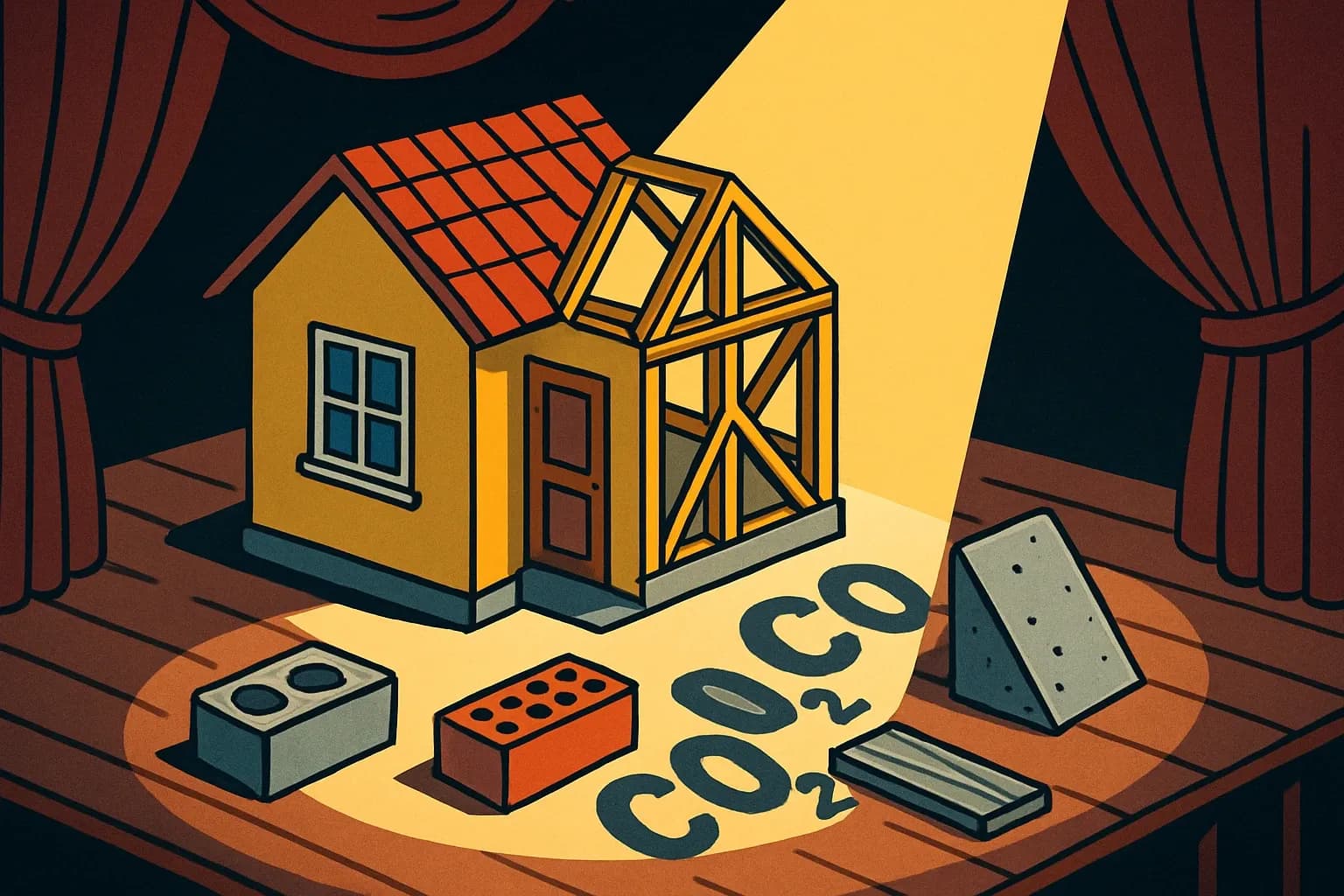Embodied Carbon Crashes the 2027 IECC-R Party
Two freshly filed code proposals—RE196-24 and RE137-24—aim to drag embodied carbon from the footnotes of voluntary standards into the body of America’s next residential energy code. If they pass, every two-by-four, insulation board, and window frame will sit under the same carbon microscope as HVAC loads. Manufacturers that show up with airtight EPD data will win specs while laggards scramble.


Embodied carbon steps out of the shadows
Operational energy used to hog the limelight, yet materials already claim as much as 55 % of lifetime CO₂ for homes built to IECC-2024 efficiency levels (NBI, 2024). Federal Buy Clean momentum may have cooled, but states from California to Massachusetts keep pushing product limits. The 2027 IECC-R is poised to make those state pilots the new national floor.
Proposal RE137-24: earn points for low-impact design
RE137-24 plugs an Embodied Carbon Credit into the prescriptive “additional efficiency packages” table. Builders can claim up to three points by showing: 1) an LCA that beats a regional baseline, 2) third-party EPDs for high-impact products, or 3) certified reuse of major structural elements (SWA blog, 2025). For product makers, every kilogram of CO₂e shaved in an EPD could translate to easier code compliance for thousands of homes.
Proposal RE196-24: disclosure meets carbon caps
Where RE137 dangles carrots, RE196-24 offers the stick. Draft language would require a maximum global-warming-potential (GWP) per product category, verified through ISO 14025 EPDs and filed with the permit set. Think CALGreen’s 2024 cap on steel and concrete, but scaled to single-family construction. Early numbers floating in committee briefs suggest a 20-30 % cut below today’s national averages, though final thresholds remain in flux.
EPDs become the new passport
Massachusetts’ stretch code already lets builders relax Energy Rating Index targets if they submit low-carbon product data (225 CMR 22 Table R406.5, 2024). The IECC proposals copy that playbook. An EPD is no longer just a marketing PDF, it is the only acceptable proof that a drywall panel or truss meets the GWP gate. Without it, builders must hunt for substitutes or eat costly design revisions.
Moves manufacturers can make now
First, map your current carbon hotspots—cement, resin, and foils add up fast. Next, align behind a current Product Category Rule so your future EPD will stay valid for the full five-year code cycle. Finally, budget lead time: a full cradle-to-gate LCA can still take three to six months if data live in far-flung spreadsheets. Waiting until 2026 is like showing up at Comic-Con without a ticket, you will watch the parade from the curb.
A fast track beats a mad scramble
The public-comment window for both proposals closes in December 2025, final code language locks in mid-2026, and state adoptions kick off from 2028 onward. That leaves just one or two line changes on a production schedule to bake in lower-carbon formulations and publish complete, dependable EPDs. Teams that move now will treat the 2027 IECC-R as a sales tailwind, not an emergency. The enviromental paperwork is optional today, but it sure looks compulsory tomorrow.
Frequently Asked Questions
Will a Type III EPD published in 2023 still satisfy RE196-24 limits?
Yes, as long as the underlying Product Category Rule remains current and the EPD’s five-year validity window covers the permit date. Update the declaration at its normal renewal to reflect any new PCR version.
Do proposals RE137-24 or RE196-24 force whole-building LCA?
No. RE137-24 offers optional credit for an LCA, while RE196-24 focuses on product-level GWP caps verified with EPDs. Whole-building LCA remains a voluntary path.
Which materials are likely to face the first GWP caps?
Committee drafts cite concrete, steel, insulation, glazing, and structural wood—mirroring CALGreen and New Buildings Institute overlays.
Can generic industry-average EPDs earn the same credit as product-specific ones?
They can document compliance, but product-specific EPDs often show lower GWP and unlock more margin within proposed caps.
How soon could states adopt the new embodied carbon language?
Historically, leading states pick up the newest IECC within two years. Expect first adoptions of the 2027 IECC-R around 2028-2029.
